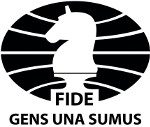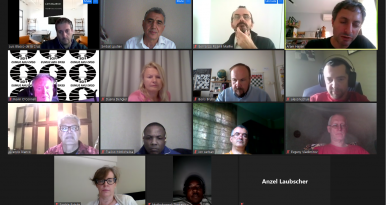Meet Caissa, the digital platform developed by ChessForEdu
by Pep Suárez

Imagine a classroom where students not only learn but also embark on an exciting intellectual journey. In this classroom, young minds become skilled strategists, making crucial decisions and anticipating their opponents’ moves. Chess becomes the vehicle for learning that stimulates critical thinking, improves problem-solving, and fosters creativity in every student. But this is just the beginning because in this classroom, chess can also be the gateway to the exciting world of STEM (Science, Technology, Engineering, and Mathematics). Welcome to the classroom of the future, where chess merges with educational innovation to create a learning environment like no other!
Caissa, a digital platform developed by ChessForEdu, is the engine driving this educational revolution and introducing chess into the educational sphere. Led by Pep Suárez, Francisco Otero, and Irene Oubiña, and from a multidisciplinary perspective, Caissa lands in various autonomous communities of Spain, such as the Balearic Islands and the Community of Madrid, and is implemented in their primary and secondary education centers. It has also found success in projects outside of Spain, the most recent being in Panama.
This tool simplifies student management processes for teachers and offers a controlled, multilingual e-learning environment accessible from anywhere. It adapts to various educational institutions, whether or not they are connected to chess. ChessForEdu accommodates the preferences of each organization, integrating Caissa into their own web domain or creating a customized portal if they do not have their own domain, thus catering to their exact needs.

Sample minigames and user management in Caissa
Teachers can relate or link educational curricular content with chess resources. Caissa offers an innovative approach, essential in today’s education, and provides an enriching educational experience that goes beyond mathematical concepts and symmetry, also encompassing language, history, and culture, among others. It helps promote skills and values associated with students’ formative processes. In this way, chess becomes a valuable companion for the teacher’s work and enhances the quality of the teaching-learning process.
Caissa includes 64 mini-games, one for each square on the chessboard, designed to enhance cognitive skills in students. These games are easy to learn and increase in difficulty, helping beginners develop strategies and plans. Chess evolves in Caissa with different board designs and creative scenarios, such as a grassy path the knight must traverse to achieve victory, frogs, foxes, and hounds. These elements, along with challenges like remembering and arranging coloured pieces placed in the path of the bishops after seeing them only once, transform the game into a completely renewed experience that goes beyond the traditional game of kings.
ChessForEdu obtains valuable feedback that helps identify key student skills, such as concentration, motivation, sociability, and logic, with the aim of improving them. Thus, chess becomes not only a game but also a powerful educational tool and the perfect companion for the teacher’s work, promoting active, participatory, and constructive teaching. Visit www.chessforedu.com to find out more.

